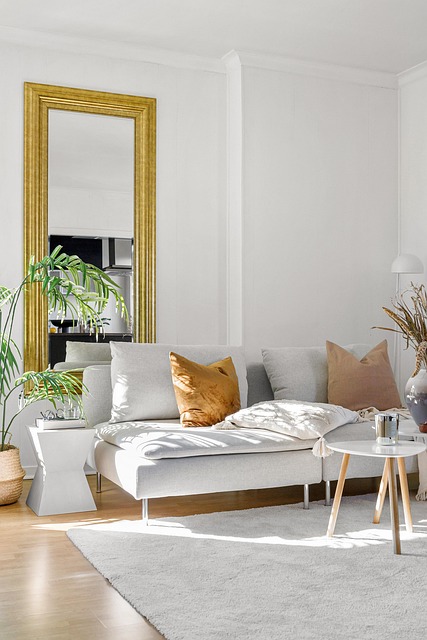
When space is limited, design decisions matter more than ever. The good news is that even the smallest rooms can be made to feel open, balanced, and surprisingly spacious with a few deliberate choices. Whether you’re preparing a home for sale or simply trying to make your living area more comfortable, the following strategies rely on practical design principles that work in any space.
1. Light Is Your Greatest Ally
Natural light immediately expands the perception of space. If possible, keep window treatments minimal—sheer curtains or light-filtering blinds allow sunlight to fill the room. Artificial lighting also plays an important role. Layering your light sources—ambient, task, and accent lighting—prevents dark corners and creates depth. Use wall sconces or recessed lighting rather than bulky lamps to free up floor and table surfaces.
2. Choose Color Wisely
Light, neutral paint colors are known for visually enlarging a room. Soft whites, gentle grays, or pale blues reflect light and reduce visual boundaries. However, that doesn’t mean your room must be devoid of color. A single accent wall in a slightly deeper tone can add dimension without making the space feel closed in.
3. Simplify the Layout
Too much furniture can quickly overwhelm a small space. Start by identifying what’s essential and remove anything that doesn’t serve a purpose. Choose pieces that are proportional to the room—oversized furniture will dominate and make the area feel cramped. Arrange furnishings to maintain clear walking paths, ideally keeping at least two feet of space for movement.
4. Use Mirrors Strategically
Mirrors are one of the oldest tricks for making rooms appear larger, and for good reason. They reflect both light and views, visually doubling the sense of openness. A large mirror opposite a window works especially well, bringing the outdoors inside and brightening the room naturally. Even smaller mirrors, when placed thoughtfully, can create the illusion of depth.
5. Keep Clutter Under Control
Nothing shrinks a room faster than clutter. Utilize smart storage solutions such as floating shelves, built-in cabinets, or furniture with hidden compartments. Keep surfaces as clear as possible, and limit decorative accessories to a few well-chosen pieces. A clean, organized room always feels more open and inviting.
6. Maximize Vertical Space
When floor space is tight, look upward. Tall shelving units, vertical artwork, or even ceiling-height curtains can draw the eye up and create the perception of greater height. This approach balances the proportions of a small room and makes it feel more spacious overall.
Final Thoughts
Making a small room appear larger isn’t about major renovations—it’s about intention. Light, proportion, color, and order all play a role in shaping how a space feels. With careful choices and a mindful approach, even the most compact rooms can achieve a sense of openness and comfort that enhances both daily living and long-term value.
